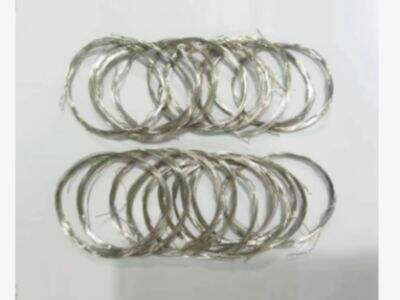In the competition of Type R vs Type S thermocouples, one of the questions to pay attention to is which tends to wear out quicker. We have both types of thermocouples at Kuaike Precision Alloy and other manufacturers do as well, but if you’re interested in the differences between Type R and Type S, it can certainly inform your purchasing decisions or help your operation last longer. For durability’s sake, we will compare Type R and S for longevity in one common application – which alloy is less prone to damage.
Comparison of Type R to Type S Thermocouples for longevity
Type R thermocouples are typically used in high temperature applications due to their extreme accuracy and stability even at prolonged use at high temperatures. These thermocouple materials are constructed with a platinum-rhodium alloy that resists oxidation and corrosion, extending life versus competitors’ elements struck or annealed using water cooled dies to provide tight tolerance and precision.
On the other hand, Type S thermocouples are also constructed with platinum-rhodium however it contains different proportions providing similar functionality at high temperatures. Though the cost of Type S thermocouples is higher than that of Type R thermocouples but they are still considered well suited for applications, which demand accuracy and durability similar to ones used in pharmaceuticals and chemical processing industries.
In comparing the operating life of Type R and Type S thermocouples one must consider applicable use conditions and maintenance recommendations. Type R thermocouples are most often used, and may be more available for replacement, though type S will provide slightly better stability over time and enhanced accuracy.
How About the Durability of the Two Thermocouple Material?
Both Type R and Type S thermocouples constructed to withstand high temperatures and harsh environments. That said, Type S thermocouples generally have a longer service life since they don’t drift as much.
Although many industrial applications are satisfied with economical and dependable Type R thermocouples, a Type S is often selected for demanding processes that require high accuracy and long-term stability. By purchasing a Type S thermocouple, you can measure temperature comfortably and reliably for an extended time and measures up to 1400 C This can cut back down on the frequency with which you have to replace or service your thermocouples.
So When Selecting Between Type R and S Thermocouples For Long Life and Robustness You Should Keep your application in mind. Kuaike Precision Alloy is able to provide you with standard and high-performance thermocouple sheath which will support your business for accurate temperature measuring, guaranteeing quality process control.
Type R Vs. Type S Thermocouples - A brief comparison
Type R and Type S are the thermocouples that are commonly used to accurately measure temperature in all types of industries. Type R thermocouples are composed of platinum and rhodium, and the type S thermocouples also include platinum and rhodium but to a different extent. Type R Thermocouples have a greater temperature range than Type S allowing its use over a wider number of applications involving higher temperatures. Type S, on the other hand, has a more stable accuracy at higher temperatures making it suitable for applications requiring precise temperature readings.
Solutions and Recommendations
Considerations When Selecting Type R and Type S Thermocouples When selecting between the two thermocouple types, you need to take into account what your application specifically needs. If you need a high range of temperature then you would be better off with Type R thermocouples. But for critical temperature readings, you might want to consider Type S thermocouples. Calibration and maintenance are requirements to guarantee the lifespan of the thermocouples. It is also advisable to shield the thin film thermocouple from severe environments which may cause material breakdown.
Detecting and Correcting Degradation in Thermocouples
Thermocouples can wear out over time due to high temperatures, vibration, mechanical or chemical abuse. Signs of Material Deterioration in Thermocouples To spot material deterioration in thermocouples, watch for irregular temperature measurement values or deviations to the output and the physical wear on the wires. At the detection of a material breakdown, it is critical to take action in order to prevent erroneous temperature measurement. This could be achieved by replacing the failed thermocouple with a new one or re-calibrating the working thermocouple to restore its accuracy.
the choice between Type R and Type S thermocouples is dictated by the application's Details. Thermocouples need to be serviced and calibrated on a regular schedule so that they could have a long service life as well as an accurate measurement. By knowing what sets the two classes of thermocouples apart and taking action against material degradation in a timely manner, users can extend the service life and optimize the performance of their thermocouples. We offer high quality temperature sensor to suit all your requirements.
 EN
EN
 AR
AR
 DA
DA
 NL
NL
 FI
FI
 FR
FR
 DE
DE
 EL
EL
 HI
HI
 IT
IT
 JA
JA
 KO
KO
 NO
NO
 PL
PL
 PT
PT
 RO
RO
 RU
RU
 ES
ES
 SV
SV
 TL
TL
 IW
IW
 ID
ID
 SR
SR
 SL
SL
 UK
UK
 VI
VI
 HU
HU
 MT
MT
 TH
TH
 TR
TR
 AF
AF
 MS
MS
 GA
GA
 AZ
AZ
 MN
MN
 MY
MY
 KK
KK
 UZ
UZ
 KY
KY
 BN
BN

